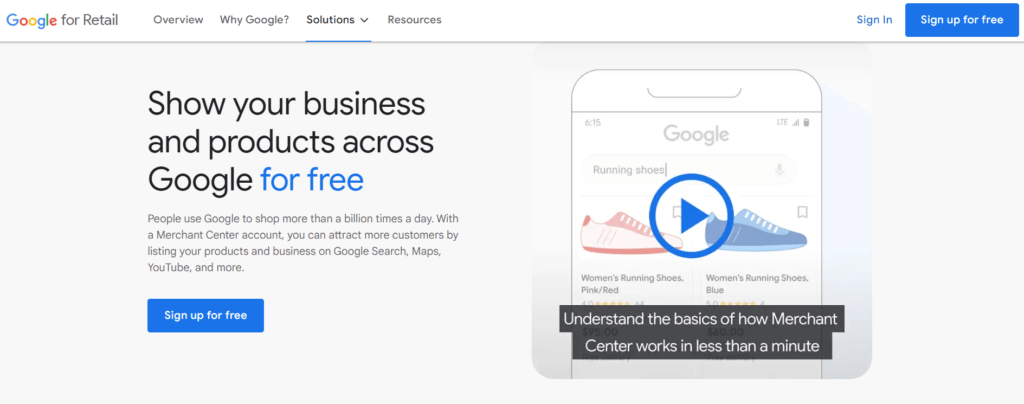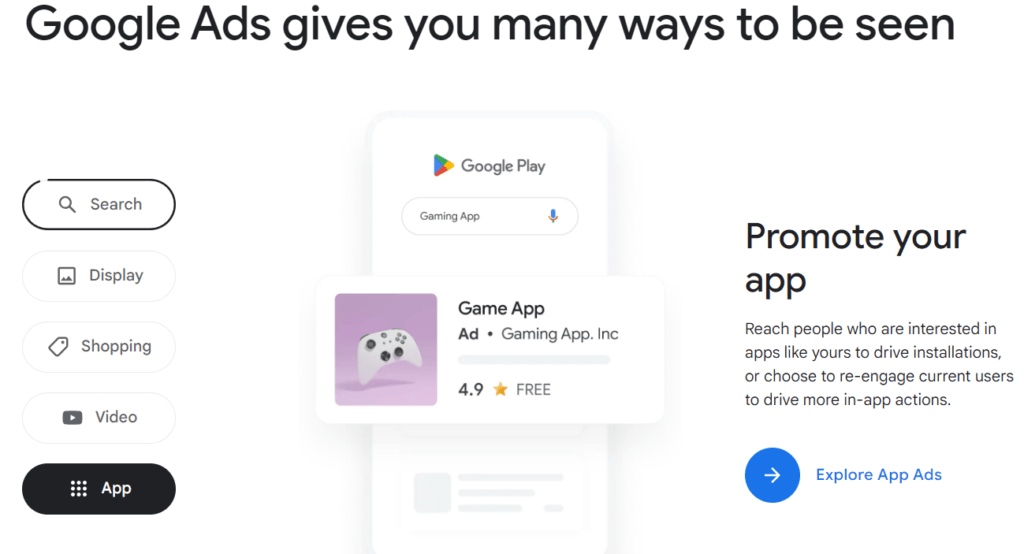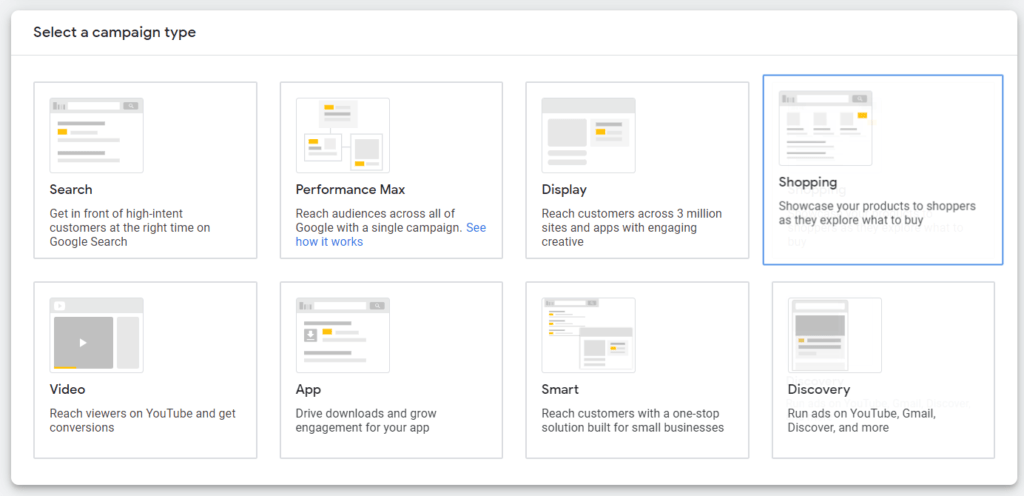Google Shopping ads are a great way to reach potential customers and increase sales for your e-commerce business. In this article, we’ll show you how to get started with Google Shopping ads by setting up a Google Merchant Center account, creating a product feed, optimizing product listings, and setting up a shopping campaign.
We’ll also provide tips on monitoring and optimising your campaign performance, using audience targeting and remarketing strategies, taking advantage of Google Shopping features, and staying up to date with Google’s policies and best practices.
With this information, you’ll be well-equipped to make the most of Google Shopping ads and drive more sales for your e-commerce business.
Table of Contents
Key Takeaways
- Setting up a Google Merchant Center account is essential for getting started with Google Shopping ads.
- Optimizing product listings through descriptive titles, detailed descriptions, high-quality images, and competitive pricing can improve conversion rates and visibility.
- Proper setup of a Google Ads account, linking it to the Google Merchant Center account, and selecting relevant keywords and targeting options are essential for online advertising success.
- Monitoring and optimizing campaign performance is crucial for evaluating the effectiveness of Google Shopping ads and adjusting to optimize results.
Set Up a Google Merchant Center Account
Establishing a Google Merchant Center account is essential in effectively utilizing Google Shopping ads to maximize e-commerce sales, providing a sense of organization and accessibility that can greatly enhance the potential for success.

One important aspect of setting up a Google Merchant Center account is ensuring that high-quality product images are included.
Product images are crucial in attracting potential customers and influencing their purchasing decisions. Clear, professional-looking images accurately representing the product can increase click-through rates and conversions.
Additionally, troubleshooting common issues is another key component of managing a successful Google Merchant Center account. Often, issues may arise regarding data feeds or disapproved products.
It is important to regularly monitor data feed errors and take prompt action to resolve them. This involves identifying missing or incorrect information, such as pricing discrepancies or inadequate descriptions.
To troubleshoot disapproved products, it is necessary to examine the reasons provided by Google and make the necessary adjustments accordingly. Common reasons for disapproval include policy violations such as misleading claims or prohibited content.
Create a Product Feed
Creating a product feed for Google Shopping Ads is essential for promoting your products on Google’s platform. A product feed is a file containing all the relevant information about your products, such as product titles, descriptions, images, and prices.
Here’s a step-by-step guide on how to create a product feed for Google Shopping Ads:
- Choose a format: Google Shopping supports three file formats for product feeds: XML, CSV, and TSV. Choose the format that works best for you. CSV (Comma-Separated Values) is a popular choice because it’s easy to create and edit using spreadsheet software like Microsoft Excel or Google Sheets.
- Create a file: Based on the format you’ve chosen, create a new file. For example, if you’ve chosen CSV, create a new CSV file using spreadsheet software or a text editor.
- Add required attributes: Google Shopping requires specific attributes for each product in your feed. These attributes help Google understand and categorize your products. The required attributes are:
id: A unique identifier for each product.title: The product’s title.description: A detailed description of the product.link: The product’s URL on your website.image_link: The URL of the product’s main image.availability: The product’s availability status (e.g., ‘in stock’, ‘out of stock’, or ‘preorder’).price: The product’s price, including the currency (e.g., ‘19.99 USD’).google_product_category: The Google-defined category for the product. You can find the list of categories here.
- Add optional attributes: Depending on your products and target audience, you may want to include additional attributes to provide more information and improve the performance of your ads. Some optional attributes include:
brand: The product’s brand name.gtin: The product’s Global Trade Item Number (e.g., UPC, EAN, or ISBN).mpn: The product’s Manufacturer Part Number.condition: The product’s condition (e.g., ‘new’, ‘refurbished’, or ‘used’).shipping: Shipping information, such as cost and delivery time.tax: Tax information for the product.
- Populate the file: Fill in the required and optional attributes for each product in your feed. Make sure to follow Google’s guidelines for formatting and content.
- Save and export: Save your file and export it in the chosen format (e.g., CSV, XML, or TSV).
- Upload the feed to Google Merchant Center: Sign in to your Google Merchant Center account. If you don’t have an account, create one and verify your website. Then, follow these steps:
- Click on ‘Products’ in the left-hand menu.
- Click on ‘Feeds’.
- Click the ‘+’ button to create a new feed.
- Choose your target country and language.
- Select the input method for your feed (e.g., ‘Upload’, ‘Fetch’, or ‘Content API’).
- Follow the on-screen instructions to upload or provide the URL for your product feed.
- Schedule regular updates: Google Shopping Ads perform best when your product feed is up-to-date. Schedule regular updates to your feed to ensure that Google has the latest information about your products.
Following these steps, you’ll create a product feed for Google Shopping Ads that help promote your products effectively and drive more traffic to your online store.
Optimize Your Product Listings
Optimizing product listings is essential for enhancing the effectiveness of Google Shopping campaigns and increasing online conversions.
By carefully optimizing your product listings, you can improve conversion rates and increase visibility, ultimately driving more e-commerce sales. Here are four key strategies to consider:
- Use descriptive titles: Craft compelling and informative titles that accurately describe your products. Include relevant keywords to help improve visibility in search results.
- Optimize product descriptions: Provide detailed and accurate information about your products, including features, specifications, and benefits. Use bullet points or subheadings to make it easy for shoppers to scan the information.
- High-quality images: Utilize high-resolution images that showcase your products from different angles. This will attract attention and represent what customers can expect.
- Pricing and promotions: Promise potential buyers by displaying competitive prices or special offers in your listings. Including discounts or free shipping options can also help boost conversions.
By implementing these optimization techniques, you can improve the performance of your Google Shopping ads by attracting more qualified traffic, increasing click-through rates, and ultimately driving higher e-commerce sales.
Set Up Your Google Ads Account
Implementing the proper setup of your Google Ads account is crucial for achieving success in online advertising campaigns.
First, you must create a Google Ads account and link it to your website. This will allow you to access Google’s powerful features and tools for managing your ads effectively.
Once your Google Ads account is set up, the next step is to connect it with your Google Merchant Center account.
The Merchant Center is where you upload and manage your product data, including images, descriptions, and prices. You can easily create Shopping campaigns that showcase your products on Google search results by linking these two accounts.
When setting up your Google Ads account, choose the campaign type that aligns with your goals carefully.
Several options, such as Search Network campaigns or Display Network campaigns, are available. Additionally, consider selecting relevant keywords frequently used by potential customers searching for similar products.
Furthermore, take advantage of the various targeting options provided by Google Ads. You can target specific demographics, locations or even remarket to users who have previously visited your website.

Setting up a well-optimized Google Ads account and connecting it with a properly managed Merchant Center account is essential for maximizing the effectiveness of your online advertising efforts.
Create a Shopping Campaign
Linking your Google Ads account with your Google Merchant Center account is essential for creating effective Shopping campaigns that showcase your products on Google search results.

This integration allows you to sync your product data from the Merchant Center and create ads based on this information. To create a Shopping campaign, follow these steps:
- Sign in to your Google Ads account and navigate to the Campaigns page.
- Click the “+” button to create a new campaign and select “Shopping” as the campaign type.
- Choose the settings for your campaign, including the campaign name, budget, location targeting, and bid strategy.
- Select the Merchant Center account containing the product data you want for this campaign.
- Set up ad groups within your campaign by organizing your products into relevant categories or themes.
- Customize your ad group settings, such as bid adjustments, negative keywords, and device preferences.
By creating a well-structured Shopping campaign, you can optimize its performance and increase e-commerce sales. Here are some shopping campaign strategies to consider:
- Regularly analyze your campaign performance using metrics like impressions, clicks, conversion rate, and return on ad spend (ROAS).
- Identify top-performing products and allocate more budget towards promoting them.
- Optimize product titles and descriptions to improve visibility in search results.
- Use negative keywords to avoid showing ads for irrelevant searches.
Implementing these strategies will help you drive better results from your shopping campaigns while maximizing ROI.
Set Your Budget and Bidding Strategy
Setting a suitable budget and determining an effective bidding strategy are crucial factors to consider when managing your Shopping campaign. Budget allocation plays a significant role in the success of your Google Shopping ads.
You must allocate enough funds to reach your target audience effectively while maintaining profitability. Setting a realistic budget ensures that your ads are visible to potential customers without overspending.
In addition to budget allocation, selecting the right bidding strategy is key to maximizing the performance of your Shopping campaign. Google offers various bidding options, such as manual CPC (Cost-Per-Click), enhanced CPC, and target ROAS (Return on Advertising Spend).
Each strategy has advantages and should be chosen based on your specific goals and priorities.
To evoke an emotional response in the audience, consider these five important aspects:
- Freedom: With flexible budgeting options, you can control how much you spend on each ad click.
- Opportunity: Properly allocated budgets provide opportunities for increased visibility and potential sales.
- Efficiency: Effective bidding strategies ensure you get the most out of every advertising dollar.
- Growth: A well-executed budget and bidding strategy can lead to exponential business growth.
- Success: Smart budgeting and strategic bidding contribute greatly to achieving desired e-commerce sales goals.
By carefully considering these factors and implementing appropriate measures, you can efficiently drive e-commerce sales through Google Shopping ads while enjoying more freedom in managing your campaigns.
Also Read: Facebook Ads vs. Google AdWords– Which is More Effective for eCommerce?
Monitor and Optimize Your Campaign Performance
This discussion focuses on monitoring and optimizing the performance of your Google Shopping Ads campaign. Tracking key metrics and KPIs is crucial to evaluate the effectiveness of your campaign.
By analyzing data such as click-through rates, conversion rates, and return on ad spend, you can identify areas for improvement and make adjustments accordingly. Utilizing performance data allows you to optimize your campaign strategy, allocate your budget effectively, and drive e-commerce sales.

Track Key Metrics and KPIs
To effectively track key metrics and KPIs when using Google Shopping ads to enhance e-commerce sales, employing an objective and impersonal approach that accurately evaluates campaign performance is crucial.
Measuring success and analyzing trends are essential in optimizing the effectiveness of these ads.
By tracking key metrics such as click-through rate (CTR), conversion rate, average order value (AOV), and return on ad spend (ROAS), businesses can gain valuable insights into the performance of their campaigns. These metrics clearly show how well the ads drive traffic, convert customers, and generate revenue.
Analyzing trends over time helps identify patterns and make data-driven decisions to improve results. Utilizing tools like Google Analytics can simplify the process by providing comprehensive reports on campaign performance. Overall, monitoring key metrics and KPIs is vital for maximizing the impact of Google Shopping ads on e-commerce sales.
| Metric | Description |
|---|---|
| Click-through Rate (CTR) | The percentage of people who click on your ad after seeing it |
| Conversion Rate | The percentage of users who complete a desired action, such as making a purchase or filling out a form |
| Average Order Value (AOV) | The average amount spent by customers per transaction |
| Return on Ad Spend (ROAS) | The ratio between the revenue generated from advertising compared to its cost |
Make Adjustments Based on Performance Data
To effectively optimize Google Shopping ads for driving e-commerce sales, it is crucial to monitor and analyze key metrics and KPIs continuously. This enables you to track the performance of your campaigns and identify areas that require adjustment.
Once you have gathered sufficient data, you can make informed decisions to improve the effectiveness of your ads and maximize your return on investment.
One important aspect of optimizing Google Shopping ads is adjusting campaign settings based on performance data. You can identify underperforming campaigns or ad groups by analyzing conversion rates, click-through rates, and other relevant metrics.
This allows you to make necessary adjustments, such as refining targeting options, modifying bid strategies, or reallocating the budget towards higher-performing campaigns.
To achieve optimal results with Google Shopping ads and drive e-commerce sales, utilising the available data-driven insights and adjusting campaign settings is essential.
Utilize Audience Targeting and Remarketing
Audience targeting and remarketing are essential strategies to employ when utilizing Google Shopping ads, as they allow businesses to connect with potential customers who have already shown interest in their products or services, fostering a sense of familiarity and trust that can ultimately drive e-commerce sales.

By utilizing audience segmentation, businesses can target specific groups of individuals based on their demographics, interests, and behaviours. This enables them to tailor their ads to the preferences and needs of these specific audiences, increasing the likelihood of attracting qualified leads.
Conversion tracking is another crucial aspect of audience targeting and remarketing. It allows businesses to measure the effectiveness of their ads by tracking user actions such as clicks, purchases, or sign-ups.
With this data-driven approach, businesses can gain insights into which ads drive the most conversions and optimize their campaigns accordingly.
Remarketing allows businesses to re-engage with users who have previously interacted with their website or shown interest in their products but did not make a purchase.
By displaying targeted ads to these users across various platforms like social media or other websites they visit, businesses can remind them about their offerings and encourage them to complete the purchase.
Audience targeting and remarketing are powerful strategies for driving e-commerce sales through Google Shopping ads.
Take Advantage of Google Shopping Features
By leveraging the diverse range of features offered by Google Shopping, businesses can enhance their online presence and maximize their visibility to potential customers.
Google Shopping provides several tools and functionalities that can help improve product visibility and drive e-commerce sales.
- Showcase Ads: With Showcase ads, businesses can display a collection of related products together, allowing customers to explore multiple options within a single ad. This not only increases the chances of attracting potential buyers but also helps in maximizing conversions.
- Local Inventory Ads: Using Local Inventory Ads is crucial for businesses with physical stores. These ads provide information about product availability at nearby stores, giving customers the convenience of purchasing items locally. This feature significantly improves product visibility and drives foot traffic to brick-and-mortar locations.
- Merchant Promotions: By offering special promotions through Google Shopping, businesses can entice potential customers and increase conversion rates. These promotions are displayed alongside products in search results, making them highly visible to users actively looking for relevant items.
Incorporating these features into a company’s Google Shopping strategy allows businesses to maximize conversions and improve product visibility.

Stay Up to Date with Google’s Policies and Best Practices
Google Shopping is a powerful tool for driving e-commerce sales, and to fully leverage its potential, it is important to stay up to date with Google’s policies and best practices.
This ensures that your ads comply with the latest guidelines and are optimized for maximum visibility and effectiveness.
Google regularly updates its policies for Google Shopping Ads, aiming to provide users with a safe and reliable shopping experience. By staying informed about these updates, you can ensure that your ads meet the requirements and avoid any potential penalties or disapprovals.
Keeping up with Google’s best practices can help you make the most out of your advertising efforts. Google frequently shares tips and tricks on optimising your product listings, improving ad performance, and maximising return on investment.
Staying up to date with Google’s policies and best practices is crucial for successfully using Google Shopping Ads. It allows you to comply with guidelines while optimizing your ads for better performance.
Also Read: The Complete Guide For Using Google AdWords To Boost Online Sales
Frequently Asked Questions
How long does it take to set up a Google Merchant Center account?
Setting up a Google Merchant Center account requires several steps. Firstly, you must have a Google Account and provide correct business information. Then, you should create a product data feed that follows the specific guidelines of Google.
Afterwards, you must link your Merchant Center account to your website to verify ownership. If you experience any issues, you may need to check your data feed or website crawl errors. In conclusion, these steps are important for setting up a successful Google Merchant Center account.
What are the key elements to include in a product feed?
Optimizing your product feed is essential for successful Google Shopping ads. You should provide accurate and detailed information, such as a product’s title, description, and images. You should also include relevant attributes like brand, price, availability, and product identifiers. This will help your products be seen and give customers a better experience.
Following Google’s guidelines will ensure your products are categorized correctly and shown to potential customers. Doing this will help your Google Shopping ads be more successful and increase your e-commerce sales.
How can I optimize my product listings to increase visibility and sales?
Optimizing product listings is important for boosting online sales. Businesses can optimise product listings to make their products more visible and attractive to potential customers.
This can be done by using the right keywords, providing detailed and accurate product descriptions, using good-quality images, and adding customer reviews and ratings.
Optimizing prices and offering good discounts can draw more customers. Doing these things well can result in greater visibility, more people clicking on the product, and more sales for e-commerce businesses.
What factors should I consider when setting up my budget and bidding strategy?
Setting up a budget and bidding strategy for Google Shopping Ads is very important. When allocating your budget, you must decide how much money to spend on advertising.
Bidding optimization is about using data-driven insights to maximize your return on investment for each bid. By doing this, you will get more visibility and increase your e-commerce sales. This approach will help you make decisions that fit your business goals.
What are some effective audience targeting and remarketing strategies for Google Shopping ads?
Placing your ads in the right places and using remarketing strategies can help make your Google Shopping Ads better. You can identify people more likely to buy your products by looking at their browsing and purchasing habits.
Tracking and analyzing data from your campaigns helps you focus on the best ad placements, so your budget is used to its fullest potential. This data-driven approach will help boost your e-commerce sales and get the most out of your investment.
Conclusion
Using Google Shopping ads can be a great way to increase e-commerce sales. Businesses can create a Google Merchant Center account and link it to a product feed to optimise their product listings.
Google Ads can also be set up to create a shopping campaign that can be monitored and adjusted for the best results.
Targeting your audience, using remarketing, and taking advantage of Google Shopping features can help you stay ahead in the e-commerce market while following Google’s rules and recommendations.







